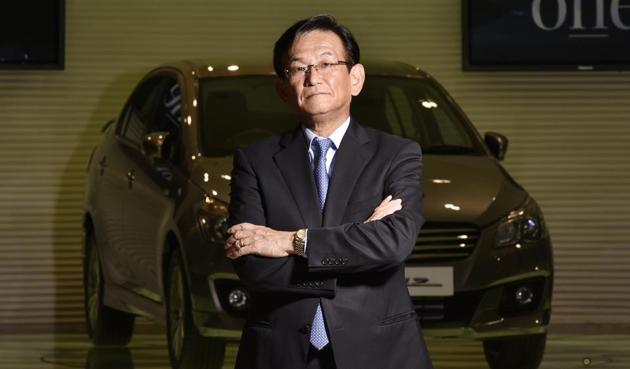Maruti Suzuki spends Rs2,000 crore in image makeover bid
Maruti Suzuki’s dealers too are spending around Rs900 crore to build premium showrooms and stockyards. It’s all part of a makeover Maruti is attempting to shed the dad’s car image it has come to acquire over the years since its inception in 1984. A key element of the makeover is Nexa—the new premium sales outlet network on which Maruti and its dealers have invested Rs2,000 crore in the past year.
Maruti Suzuki India Ltd executives have traded in their baggy, navy blue suits for slim-fit black suits or smart casuals. Some have shed weight. The hair is neatly trimmed.

Some were gamely learning to tap their feet when Deejay Axwell of Swedish House Mafia fame was mixing his numbers at a free gig in Delhi’s Indira Gandhi Indoor stadium hosted by Maruti to showcase its new launch Ignis on Friday night.
It’s all part of a makeover Maruti is attempting to shed the dad’s car image it has come to acquire over the years since its inception in 1984. A key element of the makeover is Nexa—the new premium sales outlet network on which Maruti and its dealers have invested Rs2,000 crore in the past year.
Of that sum, Maruti has invested half, managing director Kenichi Ayukawa said in an interview.
Maruti’s dealer fraternity is spending around Rs900 crore to build plush Nexa showrooms and stockyards. Some 250 dealers will have a Nexa showroom by the end of the year, up from 199 now. A significant investment will go into building standalone Nexa service centres; Maruti won’t bear the cost of infrastructure, but will give a sales margin of up to 5% to its dealers on every car sold.
Ayukawa says he wants to build a cool image for Maruti. The investment in Nexa will gradually come down as the concept takes root and the network gains critical mass.
Even so, the Rs2,000-crore bill (still counting) does seem steep for what is essentially a rebranding exercise aimed at acquiring a more upmarket image for India’s largest selling car maker.
Two other companies, Bharti Airtel Ltd and Hero MotoCorp Ltd, spent no more than Rs300 crore each on their brand revamps. Nor is Maruti the first company to offer a superior sales and service experience at select outlets. Honda Motor Co. in India pioneered the concept. So, what is Maruti’s objective?
Nexa hasn’t been a great sales success since the network was launched in July 2015. It has showcased some great models such as the Baleno and S-Cross.
But sales of 12,000 units per month from the Nexa outlets isn’t anything to write home about. Its non-premium channel sells more than 15,000 units of Swift and Dzire combined a month.
For Ayukawa, Nexa is an investment for the future.
“Through Nexa, we are challenging something that we have not done. We have a basic concept business, which is a small car, a middle-sized car. Nexa is (meant for) a little bit different kind of products which we want to supply. We want to check and recognize what is the customer expectation. Based on that information, we want to develop products not only in Nexa but also in the existing channels,” Ayukawa said.
Indeed, Maruti is trying to do things differently. Later this year, it will introduce the Baleno RS under Nexa with a one-litre turbo-charged engine, which is essentially a fuel guzzler.
That’s something which is against the basic DNA of Maruti, which has so far sworn by a high fuel economy to maintain its leadership position. Baleno RS will be all about power, performance and its only competition at the moment seems to be the Volkswagen Polo GT.
Ayukawa expects Nexa to have a trickle-down effect on the traditional sales channel.
“First we implement that kind of a concept to Nexa and if we get good response there, if we notice that such an experience is improving, we have to try to transfer some experience to the existing channel,” he said.
Of the new 15 models that Maruti plans to introduce by 2020, up to six models will be sold under Nexa.
On the perception front, Maruti has noticed a change.
“We do a brand track where we meet close to around 800 people a week and monitor the image of the brand. There is an association that is coming, which is about ‘this is the kind of car that I would like to own’. We were more associated with value for money and stuff like that. Brand association has gone up to 85% from 73-74% earlier. This has been done in just a year, which I think, says a lot,” Vinay Pant, associate vice-president (marketing), said in an interview.
It isn’t just about acquiring a premium tinge. It’s also about margins.
New regulations around safety, emissions and fuel economy will make Maruti’s entry-level cars—its bread and butter segment—expensive. Maruti will try to minimize price increases, and will take a hit on margins.
Will Nexa compensate for that?
“I think so,” Ayukawa said. Of course, higher sales of entry-level cars will partly counter the margin hit, he said.
In the coming months, meanwhile, Maruti will continue building on initiatives such as the ‘MyNEXA Concierge’ airport display and lounge for customers at New Delhi’s Indira Gandhi International Airport, and on Friday and Saturday night music concerts across six cities in the country. All on the house.





